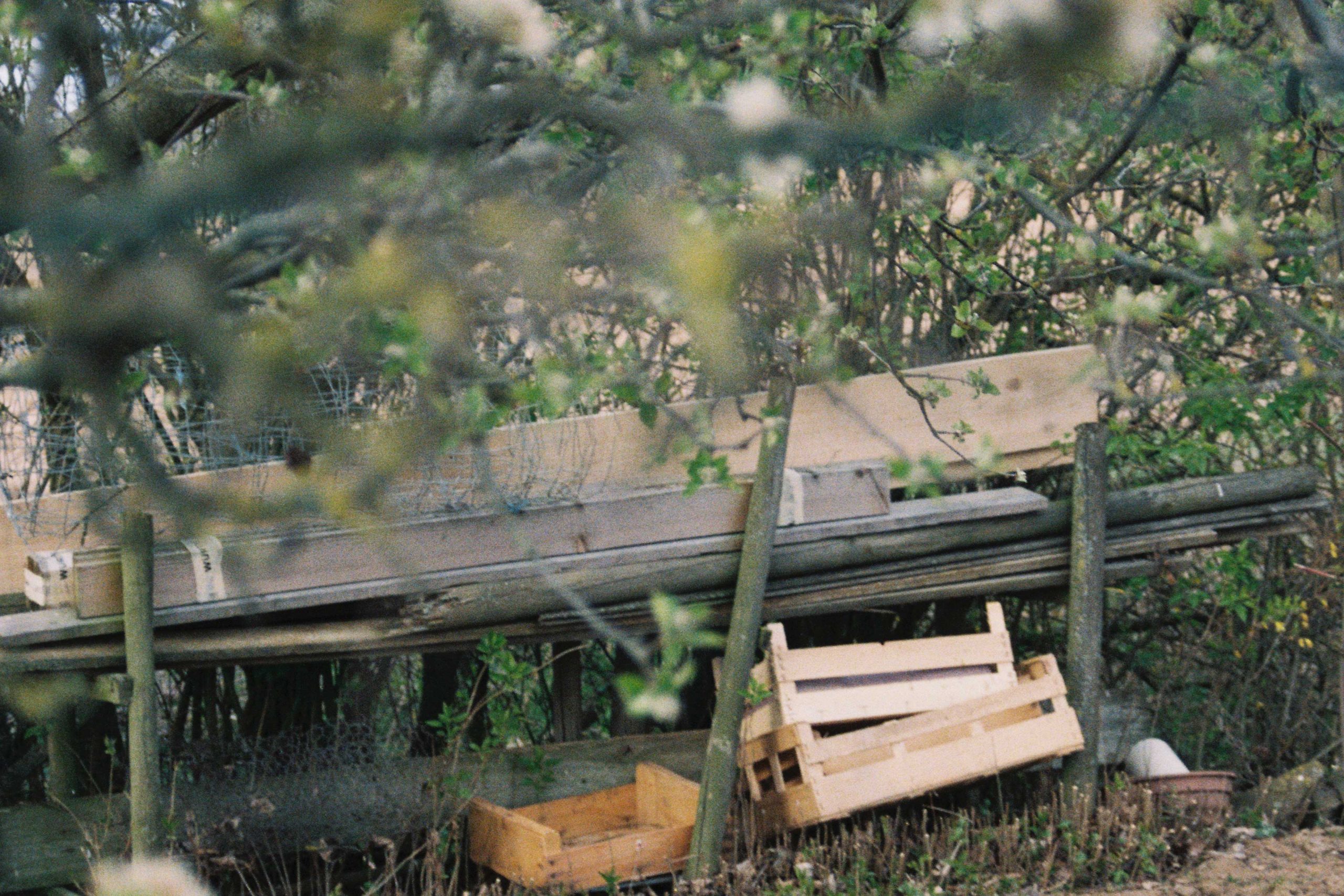Orchid House: Sex and Extinction on the Gold Coast

- Words by
- Georgina Reid
Orchidelirium. It’s a thing. Humans go wild over orchids. Is it their spectacular, symmetrical flowers, their sexual prowess, or their name (the word orchid originates from the Greek word orkis, meaning testicle)? Either way, they’ve long been a symbol of lust and wonder the world over.
Coming hot on the heels (sort of) of Tulipmania in 17th Century, orchidelirium peaked in the 19th century, with collectors tripping to the farthest corners of the globe to ‘discover’ the most exotic and beautiful species. Of course, few people knew how to grow them, so they’d be auctioned for huge sums in London and often promptly die. The lure of exotica is timeless, but not without implications: immediate, cultural and environmental.
Danni Zuvela is a curator, artist and writer with a bad case of orchidelirium. Earlier this year (pre-COVID-19) she moved home to the Gold Coast from Melbourne. A self-confessed plant nerd with a PhD in art history, Danni kept herself busy during lockdown by growing and researching orchids. One orchid in particular had her hooked – Phaius australis – giant swamp orchid, the largest ground orchid in Australia. ‘This is an extremely special orchid – it’s ridiculously beautiful. The dorsal and lateral sepals are white on the outside, and a gorgeous cinnamon-rust colour with tan venation on the inside. And the lovely, long mentum is mauve with rose accents and has a frilled, almost crispate labellum.’ (This is orchid-speak for ‘it’s gorgeous’).
Phaius australis is functionally extinct, meaning it no longer grows in the wild. It is kept alive through cultivation – through private collectors, home gardeners and botanical gardens. “We know why”, says Danni, “It’s utterly stunning, showy and highly visible, so we hunted it hard.” Also, like many orchids, it’s specific about where it lives. “It likes a freshwater swamp, where it can receive regular flows of fresh water in the shade of its friends, the melaleucas or paperbarks.”
“This is exactly the habitat that used to exist throughout the Gold Coast before the waves of property development at the end of the 19th, and particularly the middle of the 20th century, when the ‘chain of lagoons’ that made up in the inland wetlands behind the beach (the ‘green behind the gold’) were bulldozed and canalized to create waterfront property.”
Whilst Phaius australis has lost its natural habitat due to over-development and over-collection from the wild, it’s (thankfully) relatively easy to grow. It reproduces readily from seed and cuttings and as such “is quietly growing away in orchid houses up and down the east coast of Australia.”

ORCHID HOUSE AT BLEACH* FESTIVAL
Danni has a long running curatorial practice in experimental sound, and “a deep interest in listening to those voices our anthropocentrism muffles or silences.” She curated Why Listen to Plants with Liquid Architecture in 2018 and Caitlin Franzmann’s Tree Telling in 2016, also with Liquid Architecture. When Bleach* Festival, a Gold Coast arts and culture festival, commissioned her to make a new work for the 2020 event, she jumped at the chance. Orchid House was born, the name referencing Danni’s maternal grandfather, “in whose orchid house my own love of plants and their mysteries was incubated”.

Taking over the front garden of an abandoned house on Chevron Island, Orchid House is an ode of sorts to Phaius australis. Calling it her ‘propaganda garden’ (not only is she interested in provoking conversations about plant extinction and the ecological implications of development, she’s also hoping to stimulate conversation about using plants other than palm trees on the Gold Coast!), Danni’s included a mix of native species endemic to the wetlands of the Gold Coast as well as her collection of swamp orchids – plants given to her from collectors and gardeners she met through the course of researching the project. “I was extremely lucky to be able to yarn with lots of amazing orchid-lovers about the life of this mesmerising plant”, she says. “I spoke to folks at orchid and native plant societies; I trawled through Facebook and Gumtree in Brisbane, the Sunshine Coast and Gold Coast to find mentions of orchid growers who sounded like they might be a dab hand at cultivating swamp orchids; and when restrictions eased, I got in my little hatchback and zipped around visiting folks in their shade houses and backyard laboratories.”
Not only did Danni end up with three swamp orchids, all of whom have had two healthy babies each, but also with “an amazing body of collected wisdom – cultural memory that is cumulatively larger than any one human being could hold or acquire.”
The installation is accessible both day and night. And in the evenings, it gets a bit raunchy. I mean, orchids are involved, so… enter the bisexual lighting (“blue, pink and purple, like the bi flag” Danni tells me). The bisexual lighting was “a way to subtly introduce a ‘queering’ into the project. The Gold Coast is a bastion of heteronormativity, and it felt important generate a sense of sexual fluidity, and of course to reference orchids’ well-known association with erotics. There is something so urgent and intense in orchid fever that it feels like a very primal desire.”
“Plants are political”, Danni says. She tells me of the conversations she’s been having visitors at Orchid House, and how plants can be a gentle way to initiate dialogue about topics such as extinction and sexuality, environment and culture. “There’s been some really good conversations about development and environment and trying to find a balance. And, you know, the garden is safe space, and people seem happy to talk about extinction if it involves a pretty flower.”
–
Orchid House at Bleach Festival is open until November 22, 2020. Find out more about Danni’s work here.








